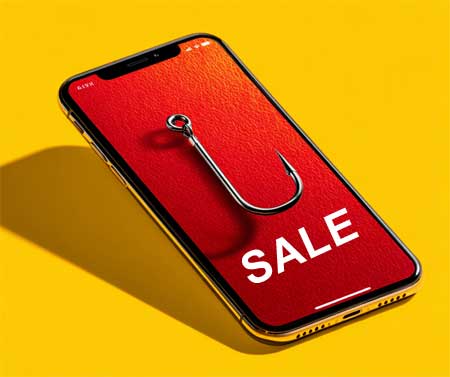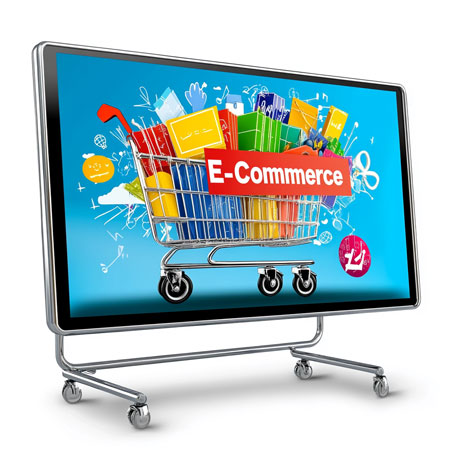
10 shopping trends to watch in 2022
The pandemic has changed many aspects of our daily lives, but one of the major changes it has caused has to do with how people shop online. This shift has led to growth and innovation in e-commerce.
In this post, we will discuss shopping trends that you should pay your attention to in 2022. How has the pandemic affected the global shopping industry?
E-commerce continues to grow
While e-commerce existed before the pandemic, online shopping has grown significantly over the past two years. In fact, the global e-commerce industry has grown to $4.28 trillion in 2020 and is projected to be worth $6.5 trillion by 20232.
In many ways, this growth was facilitated by the pandemic. However, e-commerce is likely to continue to grow due to its undeniable convenience. This not only allows shoppers to shop from the comfort of their homes, but also allows them to connect with different vendors and unique products.
Social media affects buying behaviors
Social media has been a popular marketing tool for several years, but the specific methods used are evolving to fit the current social media culture.
Influencer marketing in particular has been an important tool over the years and many brands continue to use this technique to reach their target audience.
In case you’re not familiar, influencer marketing is a technique that brands use to connect with their target audience using the influence of public figures in the same niche. For example, a beauty brand will partner with makeup gurus to promote their products in a review or tutorial video. The sports equipment company will partner with a professional athlete to represent their brand.
While influencer marketing remains popular, more organic promotion through social commerce has also become very valuable.
As TikTok has grown in popularity, virality has also affected buying behavior. Items on TikTok go viral and then sell out quickly. Sometimes branded products go viral, and sometimes regular types of products go viral. This is especially popular among younger consumers such as those who belong to Generation Z.
In situations where generic products go viral, online retailers can offer that product as well. Even when a branded product goes viral, online retailers may offer fakes.
Curbside pickup creates a hybrid buying experience
Online shopping has come to include more than mail order. During the pandemic, we are seeing a surge in online pickup orders.
In self-pickup, customers add items to their shopping cart online and the customer prepares their order. Typically, buyers will schedule a pick-up time slot and then park in designated areas upon arrival.
The curbside pickup encourages shoppers to continue supporting their local stores while avoiding crowds. Restrictions that had kept businesses operating with limited capacity were lifted in many places last year, but curbside pickup continues to benefit from convenience.
The value of self-pickup is that it combines the convenience of online shopping and eliminates the wait for home delivery.
Pickup is not limited to retail. In fact, restaurants, pharmacies, grocery stores, and other types of businesses also implement this option.
Live streaming becomes important for buying
During the pandemic, live streaming has become very popular for various business operations as remote operations have become mandatory. What makes live streaming so valuable is that it fosters engaging interactions between brands and shoppers. Live streaming makes the process more realistic, which is more like in-person shopping than online shopping.
Live streaming has been used for everything from sales to corporate training. In the context of shopping, live streaming is used to give potential buyers a more realistic view of the products they are interested in.
Consider buying clothes online. It is sometimes difficult to judge the quality or texture of material in still images. However, with the help of live video, interested buyers can see the garments from different angles. In some live streams, viewers can also ask the speaker questions about the product in real time.
Amazon, for example, was one of the first e-commerce platforms to launch a live streaming channel. This channel was especially active during last year’s Prime Day sale. Alibaba.com followed suit and ran a similar campaign during the #SuperSeptember sale.
Sometimes live streaming is a sales method that is combined with influencer marketing. This allows influencers to showcase how they use the products in real-life situations. Brands can also use livestreams to showcase all the ways their products can be used.
Digital innovations will enhance the shopping experience
Various digital innovations have improved the shopping experience since the start of the pandemic. Virtual reality is a special type of technology that has become important for shopping.
Virtual Reality, or VR for short, is an innovation that creates a simulation that puts users in an alternate digital reality. As a rule, such an experience becomes possible thanks to special glasses or headsets. There are some 2D technologies that provide a similar experience on computers and tablets.
VR technology is important and relevant for both online and in-person shopping. Simulation makes online shopping more realistic. This technology is also very important in showrooms as it helps salespeople to demonstrate the full range of product benefits or functionality.
Near real-time delivery changes the game
Almost real-time delivery has changed customer expectations in several countries around the world. Several major e-commerce platforms support shipping a large collection of products in as little as 1-2 days. Some items are even eligible for same day delivery.
This changed the perception of buyers who were afforded such a luxury. This created a sense of instant gratification and understandable favoritism towards stores that support fast shipping.
Many online stores do not currently support near real-time shipping. Small businesses that don’t have the infrastructure to compete with big players like Amazon or Walmart are in a tough spot.
Near-real-time delivery is not yet the standard, but it will be interesting to see what that looks like in the coming years.
Supply chain reinforcement becomes a must
During the pandemic, especially over the past year, supply chain disruptions have created problems for many businesses. These supply chain disruptions were caused by shutdowns, operational restrictions, COVID-19 outbreaks, and various shortages. The quarantine at the border has also limited traffic and caused bottlenecks in supply chains.
In an attempt to solve these problems, enterprises were forced to become strategic. For some, this means investing in strengthening the supply chain. Of course, this may not be possible for small businesses on a budget, but experts are encouraging larger corporations with the appropriate funds to take action. 3
While these supply chain issues and scarcity affect consumers, buying actions and trends are more relevant at the level of B2B commerce.
Niche and carefully curated assortments are in
The pandemic has brought a lot of uncertainty to businesses. In an attempt to minimize potential losses, many have cut or redirected their product offerings. They offered a carefully curated range in an attempt to meet the exact needs of their customers.
Although this trend was originally used as a kind of survival mechanism, it remains popular today.
In the era of convenience stores, finding a general store that sold everything you needed was very valuable. This saved customers from having to go to different stores to find everything they needed. With e-commerce, on the other hand, this is not a problem. Customers can buy goods in several online stores without leaving their homes.
Not only does niche searching make sense in times of uncertainty, it also allows companies to target a very specific market. In such a situation, businesses can focus their resources on delivering exceptional service to a single niche audience, rather than spreading their resources around trying to reach different segments within a general audience.
Grocery shopping goes virtual
In the early stages of the pandemic, online grocery shopping became huge. Some grocery stores operate with limited capacity, making it inconvenient to shop for groceries. Many people preferred to order groceries online because it was more convenient and avoided crowds.
In the beginning, there were several third-party providers who handled product delivery. However, as the pandemic has continued, many stores have created their own online shopping.
With online retailers, products can be delivered by courier to your door, or customers can pick up their orders from the store or via pickup.
Some brick-and-mortar stores remain important
Even though online shopping is extremely popular and convenient, there is still demand for some physical stores. Boutique stores bring a social element that online stores don’t.
Boutique store companies intelligently enhance the shopping experience with immersive experiences. This can include anything from the innovative technologies we discussed earlier to special sales.
Another fun way to enhance the in-person shopping experience is to use mobile devices to create an omnichannel experience. For example, a clothing retailer might place a QR code next to some of their best items, which will lead to a link to a lookbook to style the item. Similarly, some stores encourage shoppers to share photos of their experience with a branded hashtag to encourage online interaction.
It is also worth noting that for many buyers, visiting brick-and-mortar stores is nostalgic. While online shopping is more convenient in many cases, in-store shopping offers some semblance of pre-pandemic “normality.”







